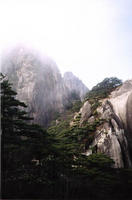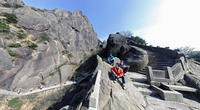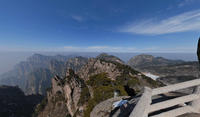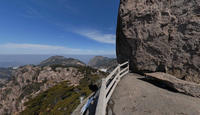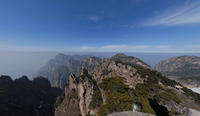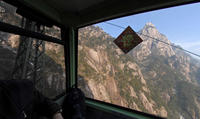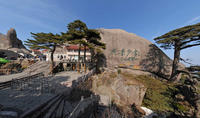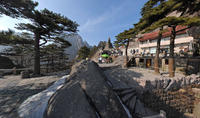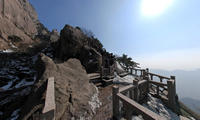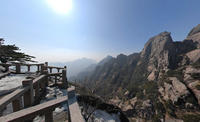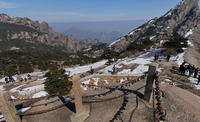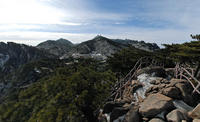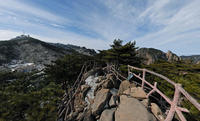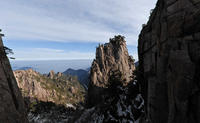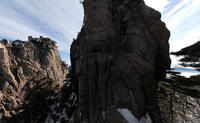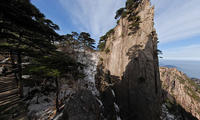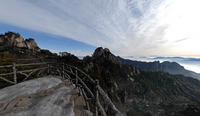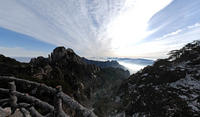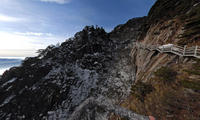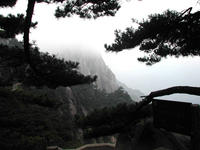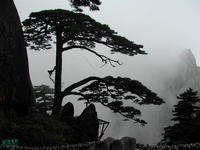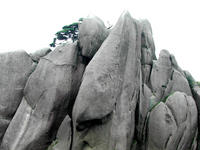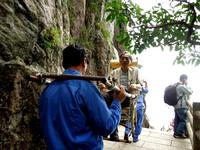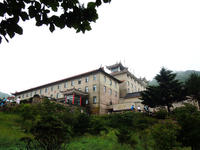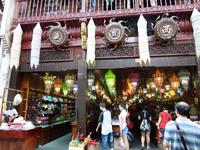You are in: Asia -> China -> Mount Huangshan, and traditional search or Image Gallery will yield results of this site only
Mount Huangshan
| Site number: | 547 |
|
| Type of site: | Mixed | |
| Date: | Mid16th century | |
| Date of Inscription: | 1990 | |
| Location: | Asia, China, Anhui Province, City of Huangshan | |
Up to 75 images are shown here. Click on each for more details or on Image Gallery for more images.
| Description: | During a good part of Chinese history Huangshan ('the loveliest mountain of China') was highly acclaimed through art and literature (e.g. the Shanshui 'mountain and water' style of the mid-16th century). In our day it holds a similar fascination for those who come on pilgrimage to the site: visitors, poets, painters and photographers. The mountain is legendary for its magnificent scenery of countless granite peaks and rocks breaking through the sea of clouds. --WHMNet paraphrase from the description at WHC Site, where additional information is available. For 360 degree imaging of this site, click here. | |
| The Huangshan is a mountain range in southern Anhui province in eastern China. The area is very famous for its scenic beauty, which lies in the peculiar shapes of the granite peaks, in the weather-shaped Huangshan Pine trees, and in views of the clouds from above. The area also has hot springs and natural pools. The Huang Shan are a frequent subject of traditional Chinese paintings and literature. Today, they are a UNESCO World Heritage Site and one of China's most popular tourist destinations. The World Heritage Site covers a core area of 154 square kilometres and a buffer zone of 142 square kilometres. The mountains were formed in the Mesozoic, about 100 million years ago, when an ancient sea disappeared due to uplift. Later, in the Quaternary, the landscape was shaped by the influence of glaciers. In many cases, stone pillar forests were formed. Since the Qin Dynasty, Huangshan had been known as the Yishan. It got its present name in 747 AD, when the poet Li Po referred to it by this name in his writing. The vegetation of the area depends on altitude: Below 1,100 m, moist forest can be found; deciduous forest stretches from 1,100 m up to the tree line at 1,800 m; above that the vegetation consists of alpine grass-lands. The area has diverse flora, where one-third of China's bryophyte families and more than half of its fern families are represented. Because the mountain tops are often above cloud level, they offer views of the clouds from above and interesting light-effects. The Sea of Clouds (Chinese: 雲海, Pinyin: Yun Hai) and Buddha's Light (Chinese: 佛光 Pinyin: Fo Guang) are famous phenomena which attract many tourists. On average, the Buddha's Light only appears a couple of times in a month. Huangshan has been a UNESCO World Heritage Site since 1990 for its exceptional natural beauty and its role as a habitat for rare and threatened species. --Wikipedia. Text is available under the Creative Commons Attribution-ShareAlike License. For 360 degree imaging of this site, click here. | ||
| Source: | http://whc.unesco.org/en/list/547 | |
| Source2: | http://whc.unesco.org/en/list/547/video | |
| Reference: | 1. UNESCO World Heritage Center, Site Page. | |


